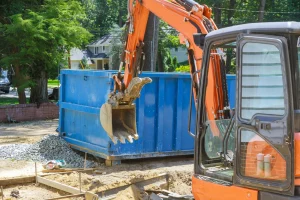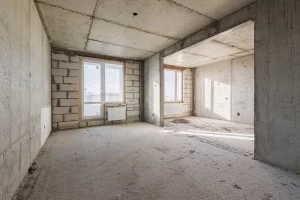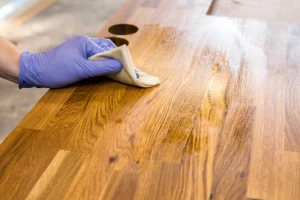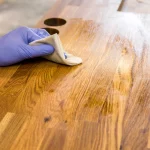Thinking about downsizing your belongings can feel overwhelming, but it’s an opportunity to simplify your life and embrace living with less. Whether you’re preparing for a move or just seeking a more manageable lifestyle, learning how to downsize your belongings is key. Start with a plan that involves organizing your items into categories: keep, donate, sell, and discard.
To begin, assess the space in your new environment and understand what will fit and what may need to be left behind. This proactive approach helps you focus on essentials and reduces unnecessary stress during the transition. Using a driveway dumpster can be an efficient solution for disposing of unwanted items that you cannot easily donate or sell.
By setting the intention to downsize, you open up your living space and mind to new possibilities. The process doesn’t have to be daunting if you tackle it strategically. Gradually work through each room, and soon you’ll see the benefits of a simplified lifestyle.
 To downsize effectively, you need a system for deciding what to keep, identifying items to discard, and dealing with duplicates. By making confident decisions, you’ll transform your space to better reflect your current lifestyle.
To downsize effectively, you need a system for deciding what to keep, identifying items to discard, and dealing with duplicates. By making confident decisions, you’ll transform your space to better reflect your current lifestyle.
 When downsizing, finding effective storage solutions can help maximize your living space. It’s essential to choose the appropriate storage unit and efficiently organize every room, including the living room, to maintain a clutter-free environment.
When downsizing, finding effective storage solutions can help maximize your living space. It’s essential to choose the appropriate storage unit and efficiently organize every room, including the living room, to maintain a clutter-free environment.
Key Takeaways
- Plan by organizing items to keep, donate, sell, or discard.
- Consider space constraints in your new or existing environment.
- Use a driveway dumpster for larger items and bulk disposals.
The Philosophy of Downsizing
Downsizing involves more than just getting rid of excess items; it’s about evaluating the emotional connections to your belongings, embracing minimalism, and employing practical methods like the Ohio Rule to manage clutter effectively. Each of these elements plays a critical role in simplifying your living space and life.Understanding Emotional Attachment
Emotional attachment is a common barrier when downsizing. You may find it difficult to part with items due to the memories they hold. This attachment often stems from significant life events, making objects feel irreplaceable. To manage this, consider keeping a limited number of sentimental items and cherish them as tokens of your past. Photographing possessions you feel emotionally tied to can help preserve memories without taking up physical space. Creating a memory book or a digital album provides another method to honor these emotional connections. By addressing these attachments directly, you can transition smoothly to a more streamlined living space.Adopting a Minimalist Approach
Emphasizing a minimalist approach means focusing on what truly adds value to your life. Minimalism encourages you to evaluate each item you own for its utility and joy it brings. This method helps in identifying essential versus clutter, allowing you to create an environment that supports your daily activities and mental well-being. Start by listing items you use regularly and those that contribute to your happiness. Anything else risks being excess clutter. Adopting minimalism doesn’t mean living in stark environments; it’s about intentional living where each possession serves a purpose or brings joy.The Ohio Rule for Clutter Control
The Ohio Rule—”Only Handle It Once”—is a powerful clutter control technique. When deciding which items to keep, try to make a decision immediately rather than repeatedly handling the same items. This approach streamlines the sorting process, reduces decision fatigue, and encourages decisive action. Applying the Ohio Rule can be particularly useful during a downsizing project. As you encounter each item, consider its usefulness or joy it brings. Then, categorize it for keeping, donating, or discarding. This method not only reduces clutter but also reinforces efficient decision-making habits in maintaining a simplified lifestyle.Planning Your Downsizing Strategy
A clear approach to downsizing your belongings can make this process manageable and less stressful. Carefully plan your strategy by creating a detailed inventory and organizing items by category. This will help you focus on what truly matters, making informed decisions about what to keep, donate, or discard.Creating an Inventory
Start by compiling a comprehensive list of your possessions. Document each item in your home, considering its size, condition, and frequency of use. This inventory will provide a clear overview of what you own and help identify items that may no longer be needed. Use a digital spreadsheet, where you can easily sort and update information. Categorize items by room or function, allowing for quick reference. Include spaces for notes on each item’s sentimental value or usefulness to assist in decision-making. Regularly reviewing and updating your inventory ensures you stay organized and focused. By maintaining an accurate inventory, you can better plan the layout of your new space. Measuring the dimensions of both your furniture and your new home helps determine if an item will fit or if it needs to be replaced. This preparation minimizes surprises during the move and streamlines the downsizing process.Organizing Items by Category
Categorizing your belongings is crucial for effective downsizing. Group items into categories such as clothes, kitchenware, or electronics, and consider subcategories based on usage or seasonality. This method simplifies the process and can highlight duplicates or items that are rarely used. Lists can be invaluable here. For instance, list clothing items by type: shirts, pants, jackets, etc. For kitchenware, consider utensils, cookware, and small appliances. Each category can be further divided based on criteria like everyday use or special occasions. Maintaining a categorized system aids in identifying unnecessary possessions that can be donated or sold. This not only reduces clutter but also contributes to a more streamlined and efficient move. Plus, categorization facilitates packing and unpacking by ensuring each box is logically filled, minimizing chaos in your new home.Executing the Decluttering Process
 To downsize effectively, you need a system for deciding what to keep, identifying items to discard, and dealing with duplicates. By making confident decisions, you’ll transform your space to better reflect your current lifestyle.
To downsize effectively, you need a system for deciding what to keep, identifying items to discard, and dealing with duplicates. By making confident decisions, you’ll transform your space to better reflect your current lifestyle.
Deciding What to Keep
Determining what to keep involves assessing the necessity and value of each item. Ask yourself if it’s something you use regularly or if it holds sentimental value. Prioritize items that positively impact your daily life and enhance your living environment. Create categories such as must-haves, valued, and non-essential. This will guide your decisions more effectively. A practical tip is using the “one-year rule”: if you haven’t used an item in a year, consider letting it go.Identifying Items to Toss
Identify items that no longer serve a purpose in your life. Look for things you haven’t used in a significant amount of time or those outgrown by their season of usefulness. Items that don’t fit your lifestyle can sometimes be easily identified. For example, clothes that you haven’t worn in the past year or gadgets that are outdated often fall into the toss category. Consider donating or recycling these items. Decluttering is an opportunity to reassess what’s essential to your everyday activities.Dealing with Duplicates
Check your home for duplicates that take up unnecessary space. Often, items like kitchen utensils or clothing have redundancies. Decide which versions of each duplicate to keep based on condition and preference. A method is to sort these duplicates in piles, then choose the best quality items. Regularly assess your living spaces for these duplicates as they tend to accumulate unnoticed. This practice ensures you’re only surrounded by what you truly need and use.Disposing of Unwanted Items
Effectively disposing of unwanted items can help you create a more organized and sustainable living space. Exploring options like selling online, hosting sales at home, and donating to charity will assist you in downsizing efficiently.Selling Items Online
Utilizing online platforms can be a convenient way to sell your unwanted belongings. Facebook Marketplace and Craigslist are excellent for listing a wide range of items locally. Both platforms allow you to set your own prices and schedules for buyer pick-up or meet-ups. For clothing, accessories, and similar items, you might consider dedicated apps like Poshmark. Take clear photos and provide accurate descriptions to attract potential buyers. When pricing your items, research similar listings to set competitive prices. This maximizes your chances of making a sale quickly. When managing your listings, stay responsive to inquiries to maintain buyer interest. Always ensure safe exchange practices. Choose public locations for in-person meetups. Selling items online not only helps you earn extra income but prevents items from ending up in landfills.Organizing a Yard or Garage Sale
A yard or garage sale offers a direct way to sell multiple items at once. Start by selecting a suitable date and preparing your items in advance. Group similar items together and clearly label prices. Consider using stickers or tags to make pricing visible. Advertising is key to drawing traffic to your sale. Post about it on Craigslist or local community boards, and place signs in your neighborhood. Make sure to specify the date, time, and location. On the day of the sale, create a welcoming environment with easy access to items. Arrange them neatly and provide enough space for buyers to browse comfortably. Having smaller bills and coins on hand ensures you can make change quickly. Hosting a yard sale is an effective method to declutter while earning some money from items you no longer need.Donating to Charity
Donating items can benefit those in need and reduce waste. Begin by sorting items that are in good condition and could be of use to others. Contact local charities or donation centers, as many are eager to receive clothing, furniture, and household goods. Organizations often have specific guidelines or restrictions on what they accept. Research their requirements to ensure your donations meet their needs. Some charities offer pick-up services, which can be convenient if you have large items. By donating, you support community efforts and contribute to environmental sustainability. Always request a receipt for tax deduction purposes if applicable. Donating is not only charitable but also a responsible way to recycle items.Finding Storage Solutions
 When downsizing, finding effective storage solutions can help maximize your living space. It’s essential to choose the appropriate storage unit and efficiently organize every room, including the living room, to maintain a clutter-free environment.
When downsizing, finding effective storage solutions can help maximize your living space. It’s essential to choose the appropriate storage unit and efficiently organize every room, including the living room, to maintain a clutter-free environment.
Choosing the Right Storage Unit
Selecting the right storage unit is crucial for keeping your belongings secure. Consider the size based on what you plan to store. A small space can work well for seasonal items, while larger units may be needed for furniture or appliances. Evaluate climate-controlled options to protect delicate items. Accessibility is another important factor. You’ll want to ensure that you can easily retrieve items when needed. Check the facility’s security features and hours of operation. Security measures, like surveillance cameras and gated access, offer peace of mind. Before committing, compare prices and terms from different providers. Some places offer flexible contracts, providing more freedom if your plans change. This approach helps ensure you’re not overpaying for unused space.Organizing Your Living Space for Storage
Maximize your living room and other areas by utilizing creative storage solutions that integrate well into your decor. Consider using furniture with built-in storage, such as ottomans and coffee tables, which provide hidden compartments without sacrificing style. Think vertically to save space. Install shelves or cabinets up to the ceiling to increase your storage space. Use wall racks behind doors in smaller areas like bathrooms or kitchens to keep essential items within reach without cluttering countertops. Invest in attractive storage boxes or baskets to maintain organization. Label everything for easy access. This strategy keeps your environment tidy and ensures you can find what you need quickly. Practical solutions enhance both the functionality and appearance of your living spaces, making downsizing a more manageable process.Frequently Asked Questions
Downsizing your belongings involves thoughtful decisions and prioritization. Key considerations include effective decluttering techniques, strategies for methodically reducing possessions, and tips for simplifying daily life without moving.What are effective strategies for decluttering a lifetime of belongings when moving to a smaller home?
Start by assessing the necessity of each item, focusing on practicality and sentimental value. Consider donating or selling items that are no longer used. Digital copies can be made of important documents and photos, reducing physical clutter. Utilizing floor plans of your new space can help visualize what fits.What steps can be taken to downsize possessions methodically in 30 days?
Break down the process into daily tasks, tackling one room or category at a time. Dedicate each day to sorting, discarding, and organizing. Use a checklist to stay on track. By setting small daily goals, you can make consistent progress without feeling overwhelmed.How can someone simplify their lifestyle and possessions without necessarily moving?
Evaluate your current living space, removing duplicates and items you rarely use. Choose multifunctional furniture and embrace digital solutions for books, media, and documents. Regularly review your belongings, keeping only what adds value to your life.What is the best approach to downsizing a personal closet with effectiveness?
Sort clothing by season, style, and frequency of use. Keep only those items that fit well and are worn regularly. Donate or sell any clothing that hasn’t been worn in a year. Consider capsule wardrobes to maintain a minimalist and versatile collection.What should be prioritized for removal when beginning the downsizing process?
Focus on items that take up the most space but are least used, such as large furniture, kitchen gadgets, and redundant electronics. Sentimental items can be tackled later to ensure you have adequate time to make thoughtful decisions.What are some tips for older individuals to efficiently downsize and eliminate excess items?
Start with easy decisions, like duplicate kitchen items or old clothes, to build momentum. Involve family members in the process, especially for sentimental items. Consider hiring a professional organizer for guidance. Prioritize comfort and accessibility in your new living space.RECENT BLOGS

Date: March 06, 2025

Date: March 05, 2025

Date: February 26, 2025
Our Reviews
LATEST BLOGS








